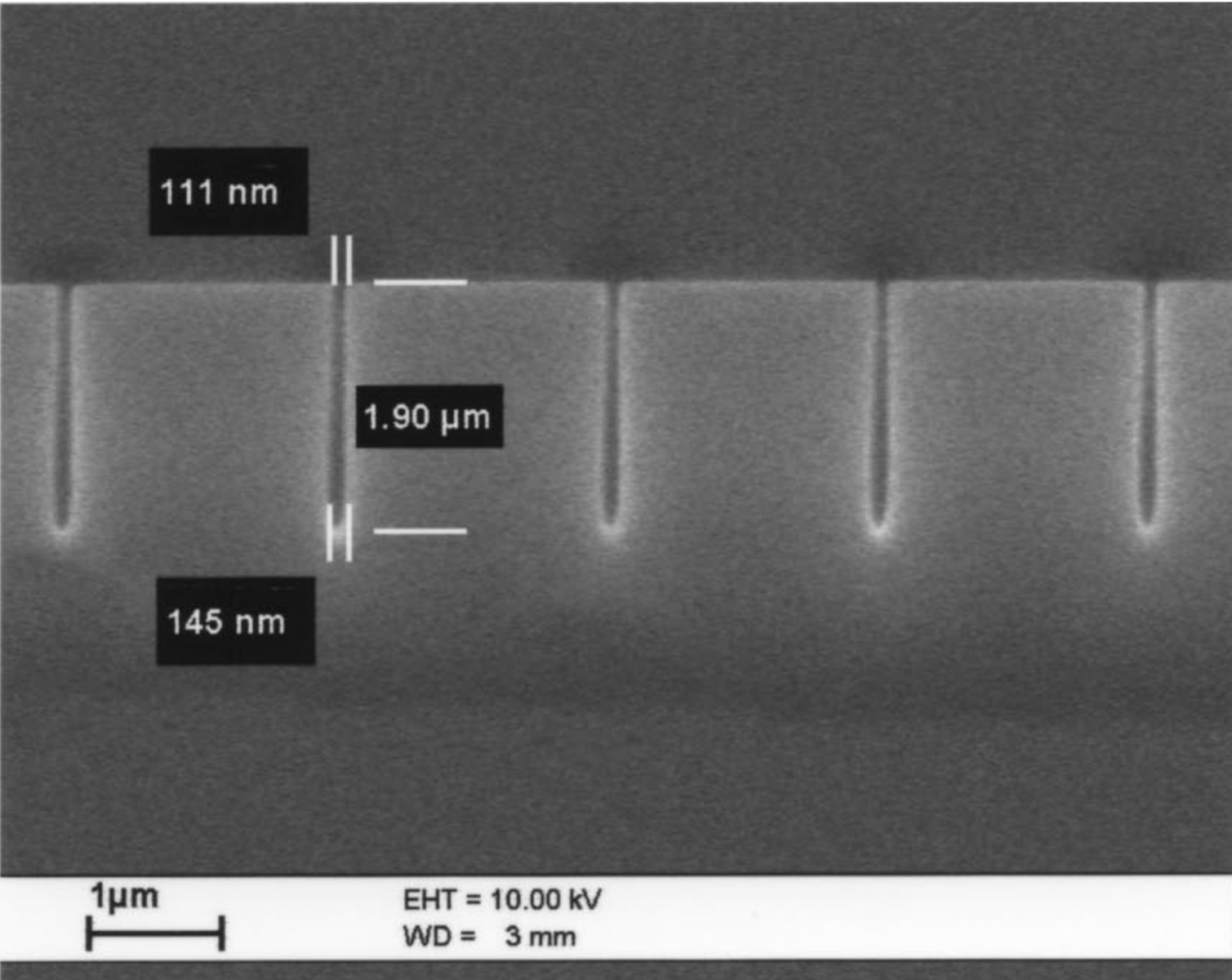Deep holes in PMMA
Back to the list of e-beam tips
If you need resist slots that are much deeper than they are wide, then there are two well-known tricks: Cold IPA-water development, and ultrasonic agitation. Here is an example of a 13:1 aspect ratio in PMMA resist, exposed at 100 kV, and developed in IPA:water 3:1 at 10C:

Here is the paper, from J. Vac. Sci. Technol B.
Why would you need such a high aspect ratio? Typically, this is for the fabrication of large magnetic poles, thick x-ray masks, or air-bridge contacts. High aspect-ratio resist patterns are not useful for etching deep holes, since the sides of the resist erode; at best you get an ugly bowl. Deep holes require a large etch ratio between the mask and the substrate.
You might be familiar with IPA-water developer, since we use it routinely for PMMA. IPA-water is the best choice, because it does not swell the resist. But there is another problem when trying to dig a deep hole: you have to move the resist molecules out of those narrow spaces. This is where ultrasonic development helps a lot.
The IPA-water developer tank in the YINQE lab is in an ultrasonic bath, but few people make use of the ultrasonic part. It takes a long time to move exposed resist out of a hole, and ultrasonic agitation can improve the speed by a factor of 3 to 5. Instead of developing for 30 minutes, you might need only 10 minutes. This acceleration of development also reduces the roughness of unexposed resist.
ANOTHER TIP: Published pictures of narrow lines in ZEP and CSAR are usually bogus, because those resists swell rapidly during SEM viewing. The only way to verify the resist profiles of ZEP and CSAR is to use plated metal. This is rarely done. In addition to swelling in a SEM, layers of ZEP and CSAR are well known to swell significantly in most developers. This limits the aspect ratio and the maximum thickness.
Note that these deep resist holes are not used for etching. When plating metal, CSAR and ZEP have no advantage over PMMA.
Afterthought
I'll bet you are thinking: What if we do an evaporation at a steep angle, so metal will cover the top of the resist but not the bottom of the hole? Then we can use the metal as a mask for fluorine etching! Ah, that old chestnut. Right- someone at Bell Labs had that idea back in the Cretaceous Period.[ref needed] It doesn't work, because evaporated metal is too lumpy. The lines and holes will get very rough and irreproducible. On the other hand, it would be interesting to revisit this old idea using a modern ALD.